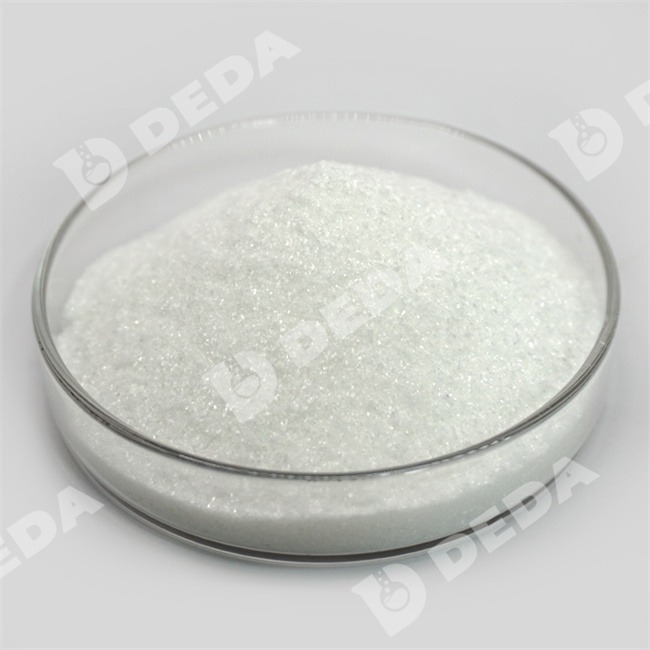Choose Methylamine hydrochloride CAS 593-51-1 or Lead Acetate Trihydrate CAS 6080-56-4?
What is Lead Acetate Trihydrate CAS 6080-56-4?
Lead Acetate Trihydrate, Crystal, Reagent, ACS is a chemical compound and is obtained by treating lead oxide with acetic acid. It is used as a reagent and comes in a crystalline form. As an ACS grade Reagent, Spectrum Chemical manufactured compounds are used as the quality standard against which other substances are graded and has met the toughest regulatory standards for quality and pureness.
Description
Lead(II) acetate trihydrate is used as a mordant in textile printing and dyeing, drier in paints, varnishes and as a water repellant. It is also used in cosmetics and to prepare other lead compounds. It serves as an ingredient in progressive types of hair coloring dyes. Further, it is used in the detection of poisonous gas hydrogen sulfide.
This Thermo Scientific Chemicals brand product was originally part of the Alfa Aesar product portfolio. Some documentation and label information may refer to the legacy brand. The original Alfa Aesar product / item code or SKU reference has not changed as a part of the brand transition to Thermo Scientific Chemicals.
Melting Point 75°C
Density 2.55
Quantity 250 g
UN Number UN1616
Beilstein 3730298
Merck Index 14,5397
Solubility Information Freely soluble in water,alcohol and glycerol.
Formula Weight 379.33 (325.28 Anhydrous)
Percent Purity 99%
Chemical Name or Material Lead (II) acetate trihydrate
Applications
Lead(II) acetate trihydrate is used as a mordant in textile printing and dyeing, drier in paints, varnishes and as a water repellant. It is also used in cosmetics and to prepare other lead compounds. It serves as an ingredient in progressive types of hair coloring dyes. Further, it is used in the detection of poisonous gas hydrogen sulfide.
Solubility
Freely soluble in water, alcohol and glycerol.
Notes
Decomposes above 200°Air and light sensitive. Incompatible with strong acids and strong oxidizing agents.

Contact Niki for more details:
whatsapp: 86-13223281135
signal: 86-13223281135
Telegram:@Nikipmk
wire: @Nikipmk
Threema: NFMRRMY6
VK:@id829684900
niki@njdeda.com
session: 05f6c69dbba1579a56a17d281f84f2712f8e23a5ab902b78132328cfcbc60e9440
Uses
Lead acetate trihydrate, the usual commercial form, is used in the preparation of basic lead carbonate and lead chromate, as a mordant in cotton dyes, as a reagent for the manufacture of lead salts of higher fatty acids, as a water repellant, as a component in combined toning and fixing baths for daylight printing papers, and as a means of treating awnings and outdoor furniture to prevent removal of mildew- and rotproofing agents by rain or laundering. Other uses include preparation of rubber antioxidants; processing agent in the cosmetic, perfume, and toiletry industries; component of coloring agents for adhesives; and preparation of organic lead soaps as driers of paints and inks.
Application
Lead(II) acetate trihydrate was a component of the solution which was used towards the fabrication of platinum black microelectrodes. Lead acetate trihydrate may be used in the manufacturing of other lead salts. It may be used in the textile industry for dyeing and printing. In paint industry, lead acetate acts as a drying agent and as a purification agent in chemical synthesis.
General Description
Lead acetate trihydrate appears as white powder or white chunky solid. Slight odor. pH (5% aqueous solution at 77°F) 5.5-6.5. It is water soluble and stable under normal conditions.
Air & Water Reactions
Slowly effloresces in air. Water soluble but solutions absorb carbon dioxide from the air and to give incompletely soluble products.
Reactivity Profile
Lead acetate trihydrate may react with acids and oxidizing agents. Is incompatible with sulfates, citrates, tartrates, chlorides, carbonates, alkalis, tannin, resorcinol, salicylic acid, phenol, chloral hydrate, sulfites, vegetable infusions and tinctures. Incompatible with phosphates . Incompatible with KBrO3 and with EDTA.
Fire Hazard
Literature sources indicate that Lead acetate trihydrate is nonflammable.
Purification Methods
Crystallise it twice from anhydrous acetic acid and dry it under vacuum for 24hours at 100o. The solubility in H2O is 63% (at ~20o) and 200% (at boiling point). [Beilstein 2 IV 118.]
